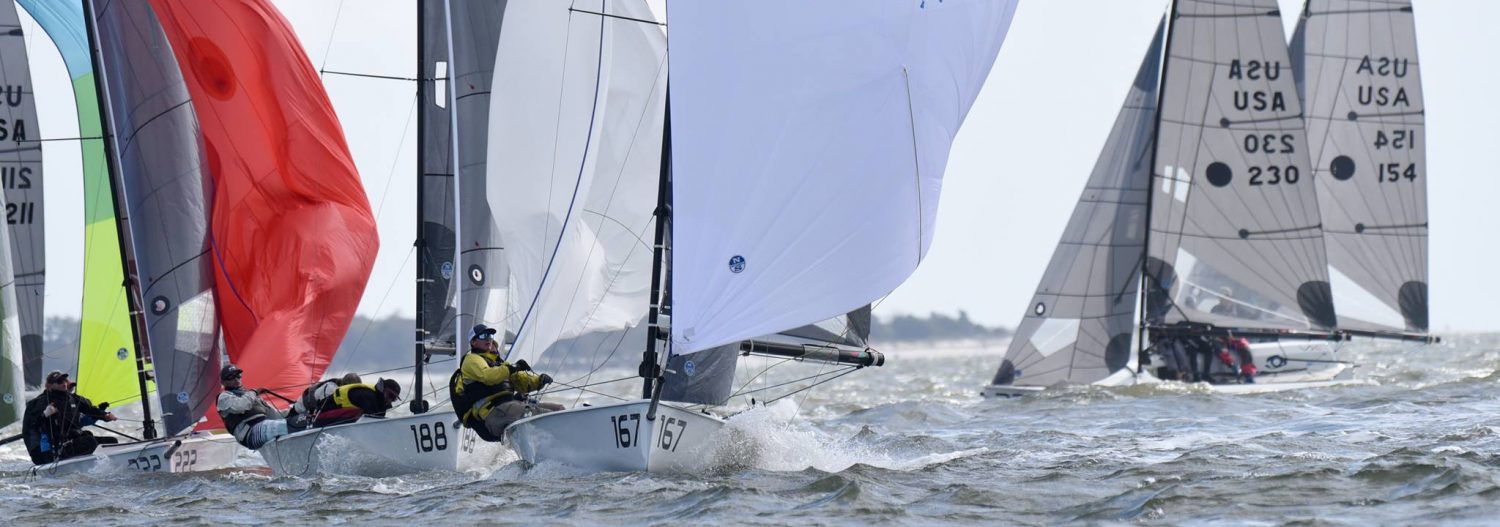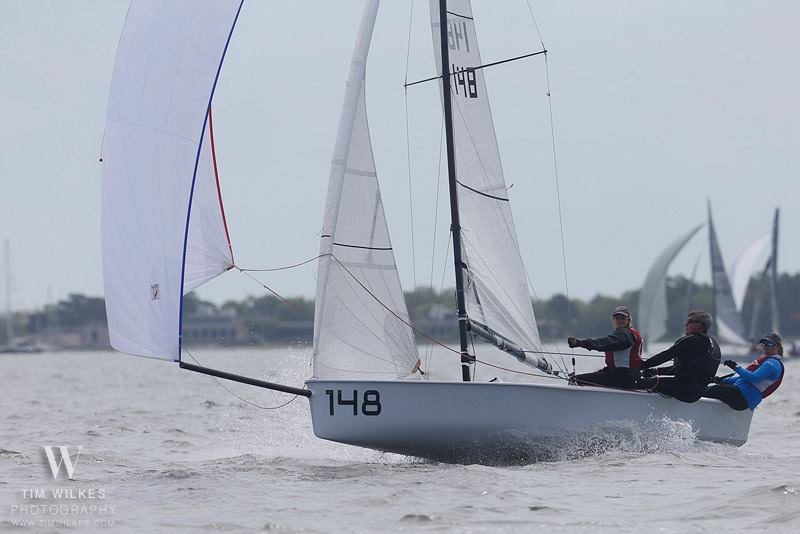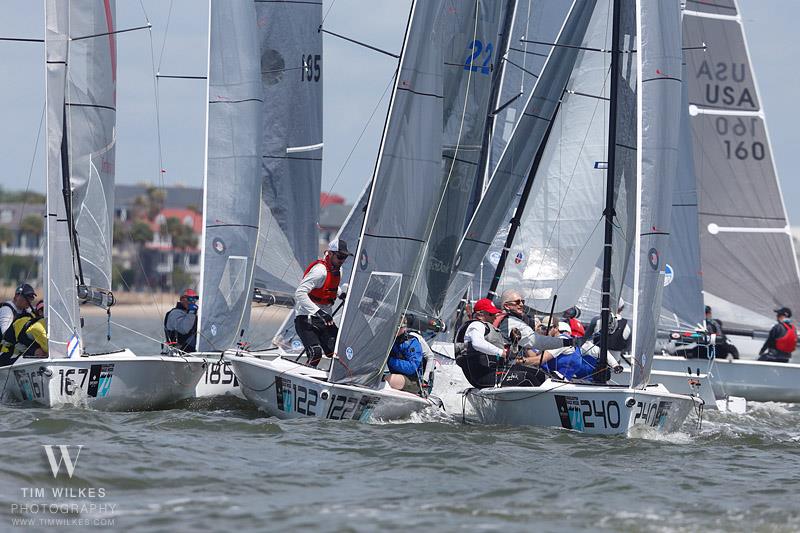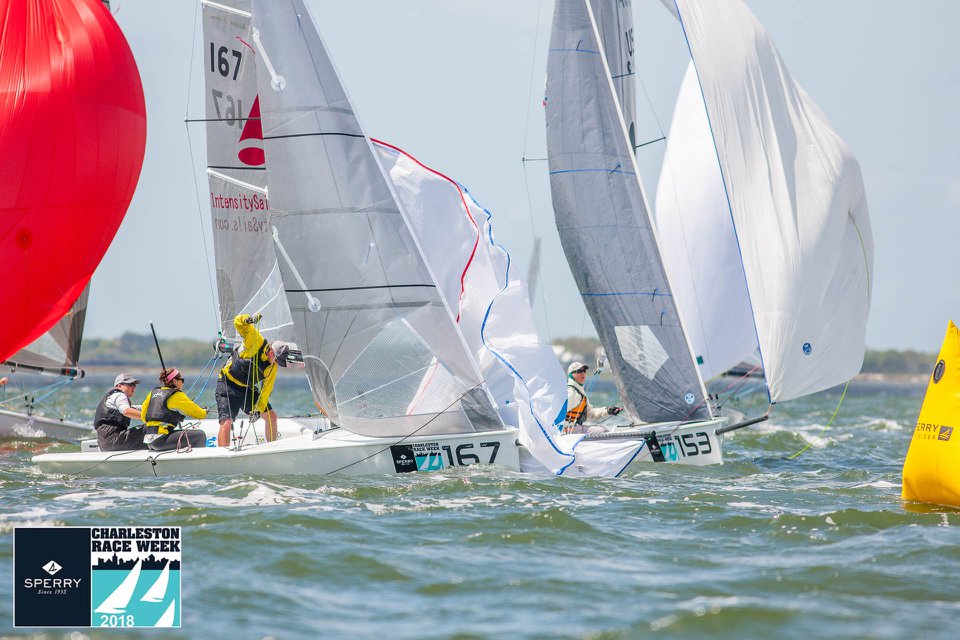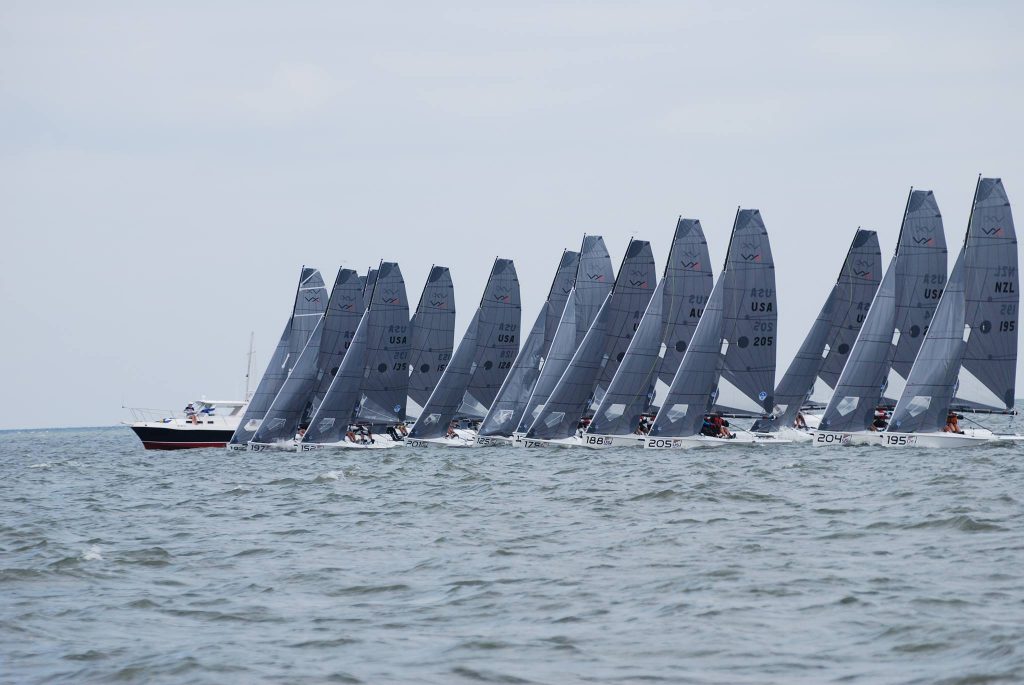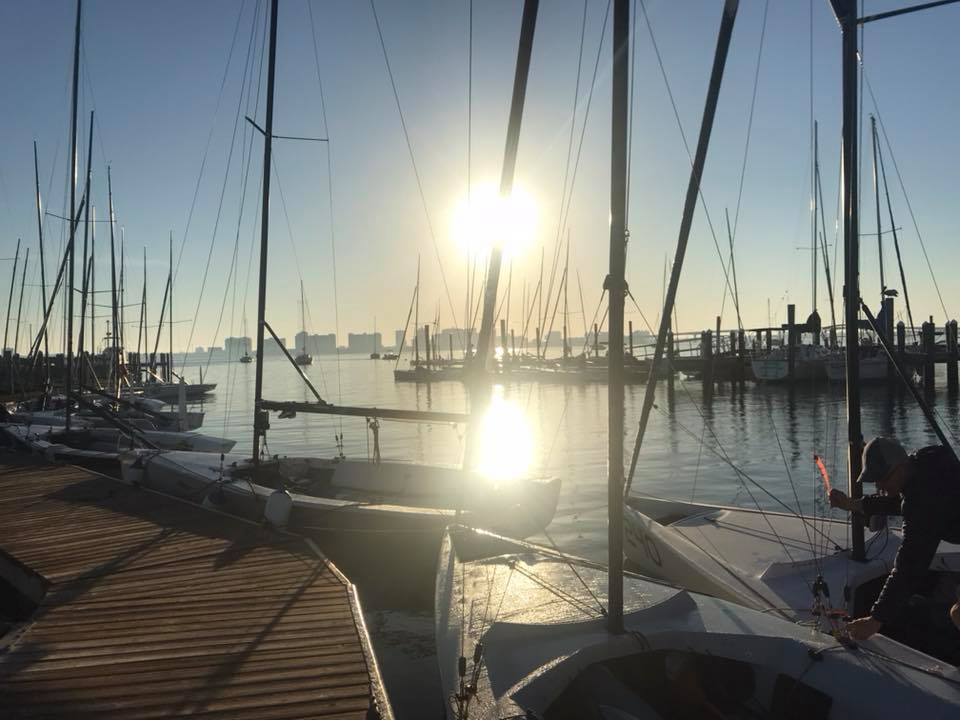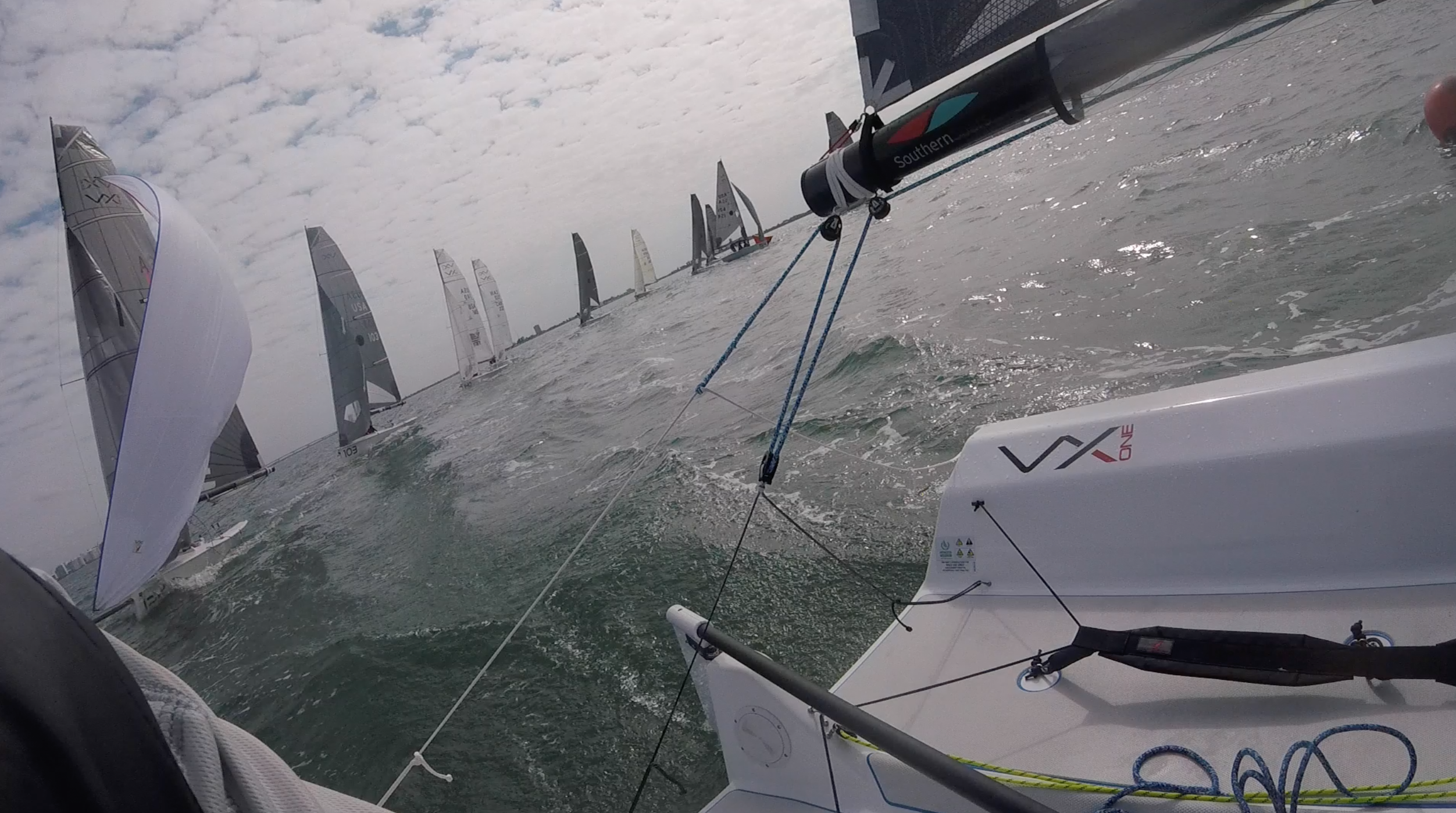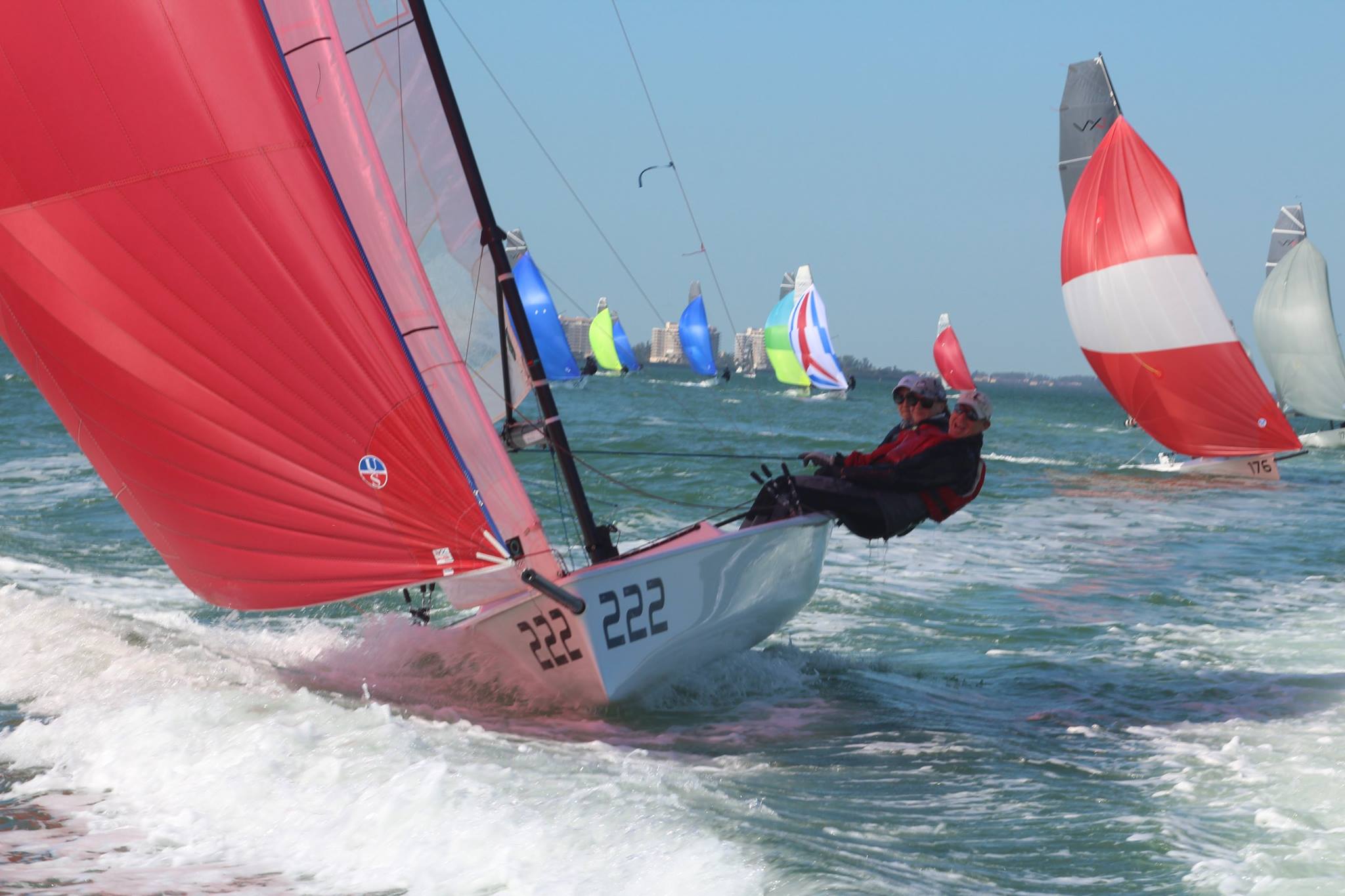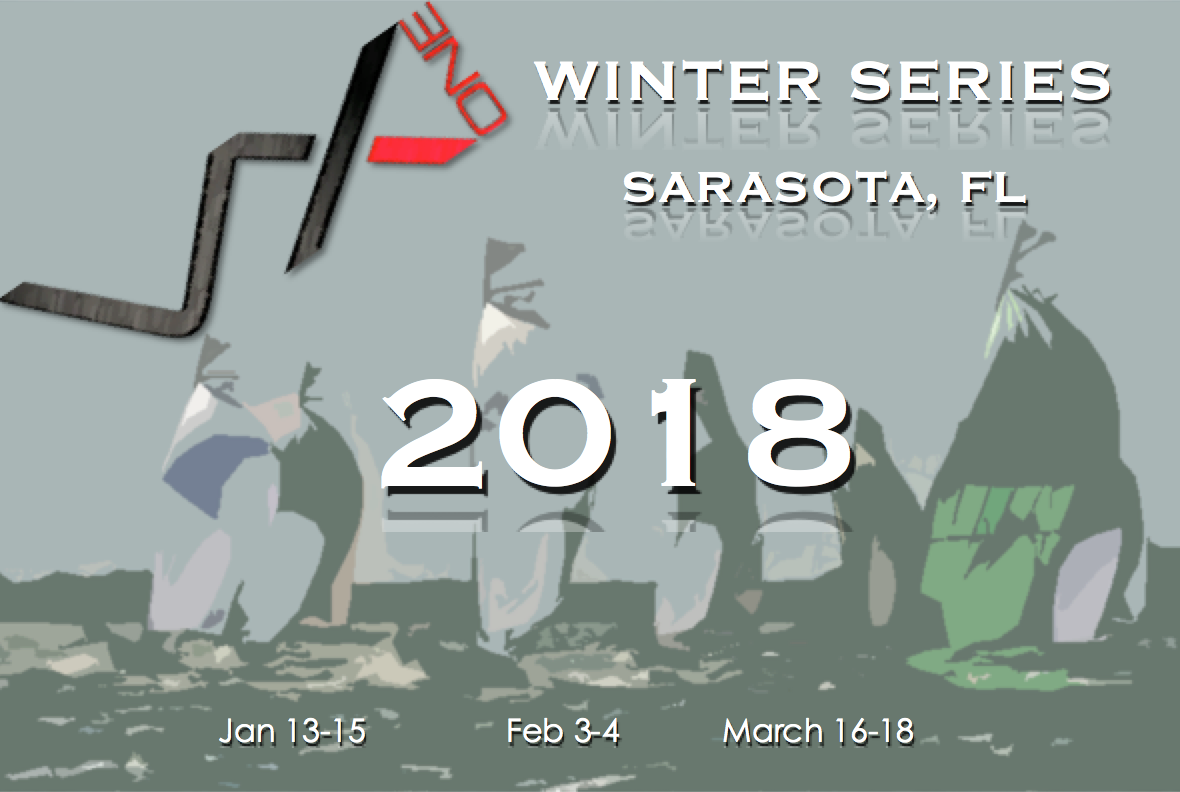Register now for the 2019 VX One Winter Series hosted by Sarasota Sailing Squadron!
After hopping in a VX One for the first time at the 2018 Newport Regatta, I wasn’t sure what to expect. Lucky for me, I had a great crew in Jeff Eiber, whose boat USA 175 we were sailing. He was able to get the initial tuning in place so that I could spend the regatta getting to know the boat and what makes it go fast. Because we had winds from 4 to 15 knots, I got to experience the VX One in a wide range of conditions. What transpired was a lot of falling down in the back of the boat, a lot of getting tangled up in lines, and a whole lot of learning coupled with a whole lot of fun.
“The VX One rewards the fundamentals of sailing” -That’s my catchphrase for this boat. What does it mean? It means that the VX One rewards clear air, good boat handling, clean starts, great boat balance, hard work, and letting the boat talk to you about what it needs – in short, the basics of sailboat racing.
VANG ON
As expected, sailing this boat flat is the key upwind, but you also need to be able to put the bow down. There are two solutions to this problem: Add weight to the rail or pull the vang on and hike. Since the boat is very weight-sensitive and more weight hurts you downwind, the best solution is to use the vang, and a lot of it. On the windiest day, with 15 knots, I pulled the vang as hard as I could get it. This allowed me to ease the sheet to stop the boat from heeling while still maintaining the leech tension for point. Consequently, I was able to put the bow down and get the boat sailing flat while keeping the leech engaged and forcing the boat upwind.
For a short-cord keelboat, the faster you go, the better the foil works, and therefore the boat slides to leeward less, but at the same time the boat also “releases.” By this I mean that it frees up and becomes easier to sail. Small rudder movements do more to change the boat’s direction instead of just creating drag. The mainsheet becomes easier to play because instead of having to dump and trim 6 feet of sheet, you have to play only 1 to 2 feet. The increase in speed powers the boat through waves instead of having the feeling that you’re hitting them and bouncing off. All this means that you can spend more time going fast and less time worrying about your speed relative to other boats. The key to the whole mix is the vang. Whenever I felt the boat bound up, I’d try pulling on a little more vang, and off we’d go again. This was true even in the lighter air.
RIG TUNE
Another piece of the puzzle was the rig tune. Thankfully, Jeff did most of the work here, but by the end of the event, I had asked enough questions that I was starting to understand what he was looking for. In any condition going upwind, he’d start from a base setting and observe the leeward upper. He was looking for it to be just going slack. Then I’d trim the main in harder than I normally would, and we’d look for over-bend wrinkles. Jeff wanted the large wrinkles from the spreader to be traveling about half way down to the clew of the sail. If they extended more than that, he’d tighten both lowers the same amount. If the wrinkles extended less than that, he’d ease off the lowers. This procedure kept the main looking flat enough in the breeze and full enough in light air. As for the base setting, Jeff would always set the boat up for the lightest wind that we were expecting during that particular race.
STAY OUT OF THE BACK OF THE BOAT
Next on my list of things learned was to stay out of the back of the boat. This lesson applied to doing anything, not just normal sailing. It was so easy to get too far back in the boat in a gybe, but that would simply stop us. The same was true for tacks, although they were a bit less critical. Staying out of the back rewarded us with good roll tacks and good roll gybes. And the reward didn’t just come from rolling hard or staying forward. It came from exiting the tack or the gybe at the correct angle so that the boat would power up right away. Upwind, if you’re too low, you’ll give up boat lengths, whereas if you’re too high, the boat will stop. The same concept holds when sailing downwind, but in the opposite direction whereby giving up boat lengths comes from being too high.
FIND A CLEAR LANE
In virtually all sailboat racing, you need to sail in a clear lane, but doing so was particularly important for our VX One. Because we were light on crew weight (350 lbs.), we needed to be very careful about having a heavy boat above us that could roll us or a light boat to leeward with insufficient vang on that was pinching. With a clear lane, we could fall into our bow-down mode, and within three boat lengths, we were the same point as the boats around us, by going faster than they were and in turn sliding sideways less.
In closing, I want to give a plug to the VX One. It’s really fun to sail. Hike hard and try to be as fast as possible all the time, and the boat will reward you in spades. With luck, I’ll get back out on a VX One soon. I’m just hoping that the next time will be in 15+ knots with the spinnaker flying!

The VX One Class was one of the largest classes at Charleston Race Week this year with 22 boats on the line. Eight races were run over the course of Friday and Saturday. Racing was cancelled on Sunday due to high winds. As per usual, CRW provided fantastic weather with good breeze and lots of fun both on and off the water. For the second year in a row John Potter on USA 187 “VX One” claimed the top spot. Chris Alexander on USA 124 “Isabelita Con Queso” finished second, with Greg Fisher on USA 175 “Reciprocity” finishing third. Boats now return to their home fleets for the summer. Check out our calendar for events happening all over the country this summer. For the most up to date information, reach out to your local fleet captain.
Be sure to follow us on Facebook for the latest news and media.

The VX One class took part in the Sarasota Sailing Squadron One Design Midwinter Regatta as our final winter series event for 2017-2018. Despite very light winds, 20 boats were on the line with Brian Bennett on USA 171 taking first, Jeff Eiber on USA 175 taking second, and Jerry Callahan on USA 205 taking 3rd after five races. The fleet then packed up and is headed to Charleston Race Week which takes place April 12-15 in Charleston, SC.

Two days of warm weather, sun and wind, created fantastic racing conditions for the second stop of the VX One Winter Series at Sarasota Sailing Squadron. 22 boats were on the line and after 5 races, Marty Kullman and Steve Liebel took 1st on board USA 106, followed by John Potter on USA 187, and Christian Koppernaes on 153. The final stop of the VX One Winter Series is coming up next month, March 16-18.

After three days of racing in a wide range of conditions from 6 to 26 knots, Jeff Eiber (Cleveland, OH) and his son Emery won the 2018 Mid Winter Championship on board VX 175 “Calvin Ball” in Sarasota, FL. 24 VX Ones were on the line for the first stop of the VX Winter Series at Sarasota Sailing Squadron and only a few points separated the top boats. Boo Heausler on VX 197 “Second Line” took second place, just two points behind Eiber, followed by Sam Padnos on VX 188 “TWD”. Racing resumes February 3-4 for stop number two of the winter series, with the final stop taking place March 16-18 before the fleet heads north to Charleston Race Week.
Full Results: http://www.regattanetwork.com/event/15653#_newsroom
Highlight Video: https://vimeo.com/251359321

Please join us in Sarasota, FL for the 2018 Winter Series!
Event 1: January 13-15, 2018
Event 2: February 3-4, 2018
Event 3: (SSS One Design Regatta) March 16-18, 2018
Register Now: http://www.regattanetwork.com/event/15653#_home
The fleet will then go to Charleston following the March event for Charleston Race Week
Macatawa Bay Yacht Club in Holland, Michigan hosted the 3rd VX One Great Lakes Championship on May 17 and 18 on Lake Michigan. Sailors enjoyed great sailing conditions on Saturday and Sunday and great social time at the Club. We had 10 VX’s on the starting line, with sailors coming from Connecticut, Ohio, and Ontario to participate in this year’s Championship. 4 races were held on Saturday with winds coming out of the south ranging from 8-12 knots. Racing concluded early Sunday afternoon after 2 races in steady breeze from the Southwest ranging from 12-15 knots. MBYC’s Sam Padnos and Grant Goeman finished at the top of the pack with 7 points, followed by Ched Proctor, Jeff Eiber, and LJ Nykamp finishing 2nd with 10 points. John Arendshorst and JP Del Solar Goldsmith rounded out the top three with 13 points. We had fantastic racing conditions and race management. Thanks again to all of the volunteers, Race Committee, and Yacht Club staff for making this a wonderful event.
